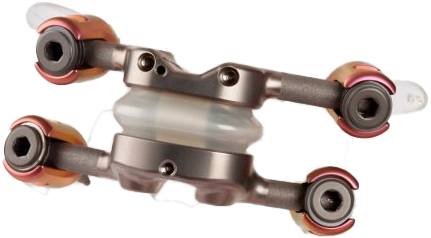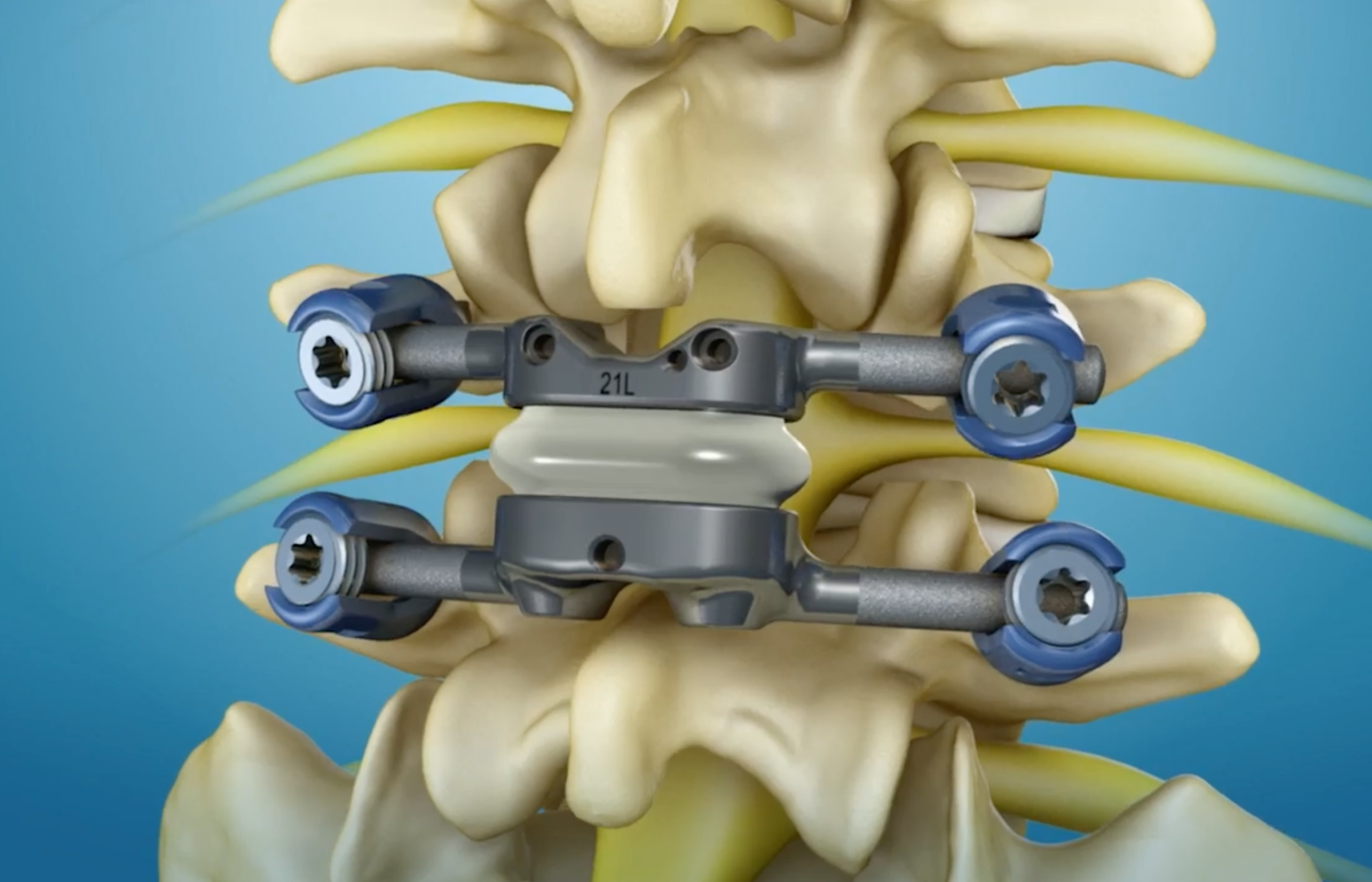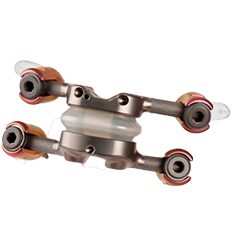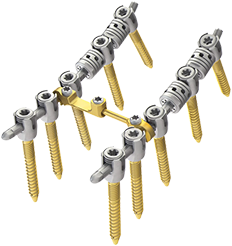Combining motion preserving and fusionHybrid techniques
At ONZ, we are proud to offer two systems of posterior spine solutions and fusion techniques. TOPS™ and HPS™ 2.0 System.
Each of these state-of-the-art prostheses is designed to restore spinal mobility and alleviate pain, tailored to the unique anatomical and clinical needs of each patient. Our philosophy is simple: the best solution is the one that fits the patient, and our team carefully evaluates individual parameters to determine the optimal implant.
TOPS™ System
Mobility with Stability
An advanced alternative to spinal fusion, the TOPS™ System preserves natural movement while providing spinal stabilization and faster recovery.

Key Features of the
TOPS™ L Disc
Motion Preservation
The TOPS™ System maintains natural movement across the lumbar spine, unlike traditional spinal fusion which restricts motion.
Pain Relief
Reduces nerve compression and spinal instability, alleviating chronic back pain.
Durable & Stable
Titanium pedicle screws and a mechanical implant ensure controlled motion and long-term spinal support.
Faster Recovery
Enables patients to resume daily activities more quickly than with traditional fusion procedures.
How the
TOPS™ L Disc
Stabilizes and Preserves Motion
The TOPS™ System is designed to provide both stabilization and mobility through a mechanical implant. During the procedure, the affected area of the spine is decompressed, and the implant is secured with titanium pedicle screws. Unlike fusion, this system allows controlled motion, supporting flexion, extension, and lateral bending.
Who Can Benefit
from the TOPS™ System?
Lumbar Spinal Stenosis
Narrowing of the spinal canal that compresses nerves, leading to pain, weakness, or numbness in the legs.
Degenerative Spondylolisthesis
Vertebral slippage caused by disc and joint degeneration, resulting in spinal instability and pain.
Chronic Back Pain:
Pain persisting despite six or more months of conservative treatment, where patients seek a motion-preserving alternative to spinal fusion.
Why Choose
the TOPS™ System?
The TOPS™ System offers a unique solution by combining spinal stabilization with preserved motion. This approach significantly reduces nerve compression, allows controlled movement, and enables faster recovery compared to fusion techniques.
Controlled Motion Preservation
in Action
The TOPS™ System supports controlled motion, including flexion, extension, and lateral bending, helping patients maintain mobility while preventing further spinal instability

HPS™ 2.0 System
Hybrid Performance
A minimally invasive procedure. Specialized instruments and a camera provide precise treatment, minimizing damage to muscles and tissues, leading to faster recovery and less pain.

Key Features of the
HPS™ 2.0 System
Multisegmental fusion with dynamic stabilization
HPs 2.0 allows for a shortened fusion distance to reduce the risk of adjacent segment degeneration.
Controlled range of motion
HPS 2.0 enables movement in flexion, extension, and lateral tilt while minimizing translation and axial rotation.
Axial length adjustment
HPS 2.0 dampens axial forces, relieves facet joints and intervertebral discs, and maintains the physiological pivot point of the index and adjacent segments.
How the
HPS™ 2.0 System Maintains Natural Movement
The HPS™ 2.0 system stabilizes the spine with multisegmental fusion and dynamic cranial stabilization. Its dynamic connector controls movement while allowing flexion, extension, and lateral tilt, reducing translation and axial rotation. Controlled axial length adjustments optimize pedicle spacing, dampening forces, relieving joints and discs, and preserving natural movement.
Why Choose
the HPS™ 2.0 System?
HPS™ 2.0 is an excellent choice for spinal stabilization as it combines stability with controlled mobility. By allowing natural movement while minimizing excessive strain on adjacent segments, it helps reduce degeneration risks and enhances patient comfort. Its dynamic design supports better load distribution, making it a reliable solution for long-term spinal health.
Targeted Approach
Compared to other techniques HPS 2.0 allows for a more targeted approach to the affected area, resulting in more precise treatment and better outcomes. It’s associated with a lower risk of complications, such as infection or nerve damage.
Custom Solutions for Every Patient.
Contact us today to learn more about our comprehensive spinal solutions.
At German Spine Solutions / ONZ, we understand that every patient is unique. That’s why we offer a portfolio that enables fully personalized treatment strategies. The ESP®, Baguera® L, and Prodisc® L are all exceptional in their own right, and our team works closely with each patient to identify the best option based on their anatomy, clinical history, and treatment goals.With these three world-class systems, we ensure optimal outcomes and a path to restored mobility and pain relief.
Contact us Today
